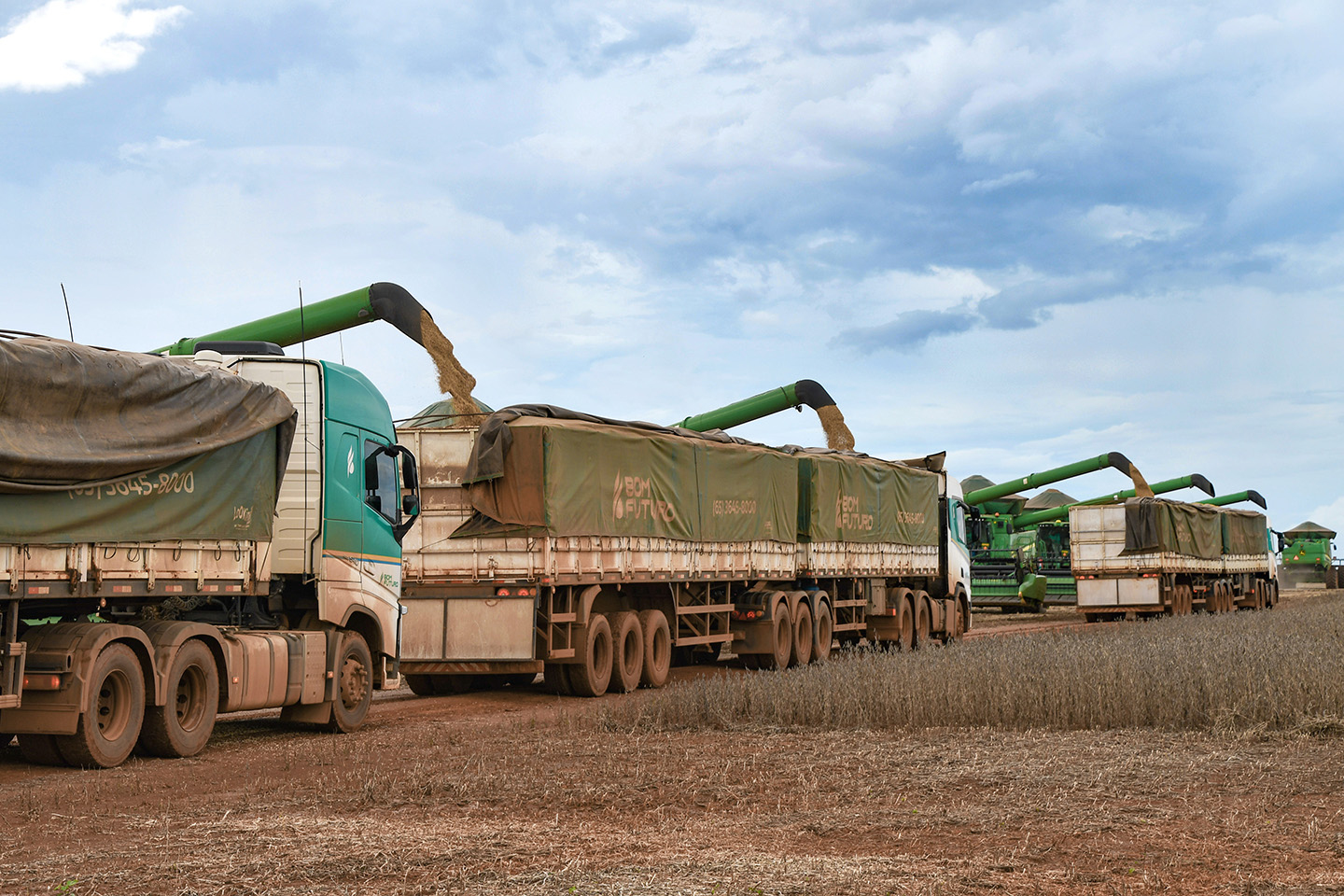
Soybean harvest by Bom Futuro in Mato Grosso. The company is Brazil’s largest producer of soy and leading provider of seed and genetics. (Photo: Aaron Putze/Iowa Soybean Association)
South American Spotlight
June 1, 2022
Brazilian soybean exports are on pace compared to this time a year ago, but shipments have slowed over the past two months.
“On a volume basis, it’s on par with the January-April period last season, but the distribution and time is different,” says Mac Marshall, vice president for market intelligence for the United Soybean Board (USB) and the U.S. Soybean Export Council (USSEC).
Shipments in 2022 were “markedly higher than 2021 for January and February, on par for March, and appreciably lower for April,” Marshall says.
Brazilian soy exports typically peak in April or May, but the data suggests March may have been the peak, Marshall adds. May loadings have averaged 17.4 million bushels (474,000 metric tons) per day, down from 26.19 million bushels (713,000 metric tons) per day in May of 2021.
That said, while soybean supplies for export from all of South America for the first half of 2022/23 marketing year were reduced, an anticipated record harvest and higher exports beginning in early 2023 is expected to leave the United States with a lower share of global trade in 2022/23. That’s according to the USDA’s World Agricultural Supply and Demand Estimates (WASDE) report, released in mid-May.
CONAB, Brazil’s equivalent to the USDA, indicated in its May report that 95% of its soybean crop is harvested, putting production at 4.54 billion bushels (123.83 million tons), up 1.1% from April, but down 10.4% from 2021 due to drought conditions in late 2021 and early 2022. CONAB left its soybean export estimate unchanged on the month at 2.82 billion bushels (77 million metric tons).
While drought woes certainly impacted South American soybean production, Brazil, Argentina and Paraguay will continue to be competitive in the export market, says Chad Hart, Iowa State University professor and extension economist.
“Traditionally, Brazil sort of beats (the United States) on production costs, but the U.S. has a leg up on transportation costs,” Hart says. U.S. exports to China, the largest importer of soybeans, takes half the time to transport than South American exports to China, he adds.
But Brazil, Hart says, is working to improve its transportation efforts.
Checkoff investments improve competitiveness
While both the United States and Brazil are continuing their efforts to best the other, realistically China needs both the U.S. and Brazil, Hart says.
“If China were a smaller country and only demanded 50-60%, it would be a strong fight between Brazil and the U.S. As it is, neither side has to fight really hard.”
Marshall agrees with Hart that “one of our competitive advantages globally is reliability and timeliness.
“We have an advantage, but we cannot be complacent,” Marshall says. “The same holds true for infrastructure. That’s why checkoff programs in the U.S. are continually investing in infrastructure improvements.”
Marshall says updates to American waterways like the Mississippi River, as well as a major expansion and upgrade to the export facilities at the Port of Grays Harbor in Washington state are critical.
Hart says input costs are impacting both U.S. and South American production.
“You hear the same sort of discussion on herbicides and chemicals – concerns about eroding the profit margins around the world,” he says. “Thank goodness we have high (commodity) prices right now.
“But it’s the nature of agriculture – our costs always race to catch up with prices.”
And like the United States, South American numbers are always fluctuating. So, is anything ever set in stone?
“Oh, God no,” Marshall laughs.
But for now, it seems like the world is “ready for anything we (both the U.S. and South America) can produce,” Hart says.
Back